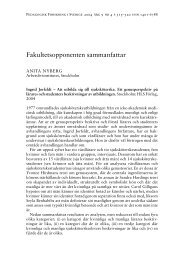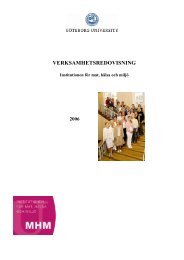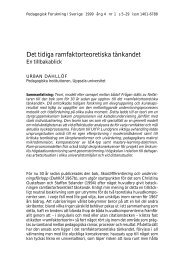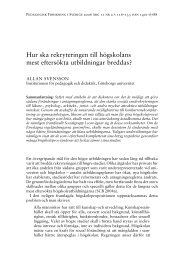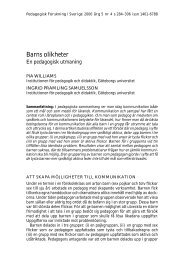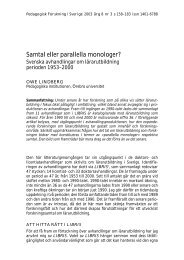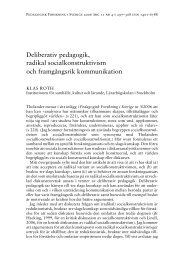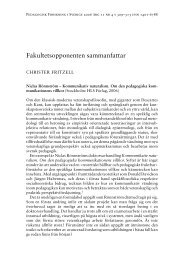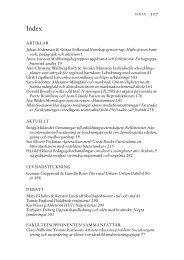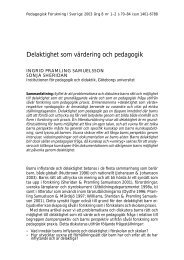University of Oslo Workshops June 29-30 Conference July 1-3 ...
University of Oslo Workshops June 29-30 Conference July 1-3 ...
University of Oslo Workshops June 29-30 Conference July 1-3 ...
You also want an ePaper? Increase the reach of your titles
YUMPU automatically turns print PDFs into web optimized ePapers that Google loves.
The Impact <strong>of</strong> Missing Data on Subgroup Estimation<br />
Leslie Rutkowski, Indian Universiy, USA<br />
TIMSS and PIRLS use a sophisticated assessment design whereby each individual student<br />
is only administered a small number <strong>of</strong> the total possible cognitive items. In particular<br />
TIMSS and PIRLS use a rotated booklet design that ensures that each cognitive item<br />
receives sufficient exposure and that each examinee receives a sufficient number <strong>of</strong> items<br />
to estimate population-level achievement in a number <strong>of</strong> domains and sub-domains. While<br />
this method <strong>of</strong> item delivery is efficient from an administration perspective, the approach<br />
poses intractable challenges for precisely estimating individual student achievement. To<br />
overcome the methodological challenges associated with multiple-matrix sampling,<br />
international LSA programs adopted plausible value methods that use marginal estimation<br />
techniques to generate population level achievement estimates (Mislevy, 1991; Mislevy,<br />
Beaton, Kaplan & Sheehan, 1992; Mislevy, Johnson & Muraki, 1992). While the plausible<br />
value methodology has been well established theoretically and empirically, a paucity <strong>of</strong><br />
literature appears to exist regarding the effect <strong>of</strong> poor quality background data on<br />
subpopulation achievement estimates. In the current paper, we seek to examine the impact<br />
<strong>of</strong> missing background data used to estimate subpopulation achievement. First, we reason<br />
that group differences will be underestimated when background variables used to optimize<br />
subpopulation achievement differences have high rates <strong>of</strong> missing (at random) data.<br />
Second, we examine the impact <strong>of</strong> background data that are systematically missing or<br />
missing not at random. Data are simulated using TIMSS 2007 item parameters and a<br />
variety <strong>of</strong> conditions.<br />
Keywords: TIMSS; plausible values; subgroup achievement estimation<br />
On the Degree <strong>of</strong> Comparability in Trend Studies as a Function <strong>of</strong><br />
Differences in Age and Schooling<br />
Monica Rosén, <strong>University</strong> <strong>of</strong> Gothenburg, Sweden<br />
Rolf Strietholt, Dortmund <strong>University</strong> <strong>of</strong> Technology, Germany<br />
<br />
Linking IEA-studies on reading literacy <strong>of</strong> 9-10 year-old students via IRT-technique<br />
provides an extensive source for trend analyses from 1970 to 2006. Comparison derives<br />
from the assumption <strong>of</strong> having comparable groups in respective studies and countries.<br />
Regarding this, students’ age and time <strong>of</strong> schooling play a crucial role since the subsamples<br />
cover students that differ in terms <strong>of</strong> age, grade and test months. Therefore, the<br />
comparability can be considered as a function <strong>of</strong> differences in age and schooling. The<br />
main purpose <strong>of</strong> our analysis is highlight issues <strong>of</strong> study design that appear in trend<br />
analysis and affect the comparability. We discuss miscellaneous strategies to handle such<br />
differences and address limitations <strong>of</strong> these approaches.<br />
Keywords: age effect; comparative study; reading literacy; schooling effect<br />
56



